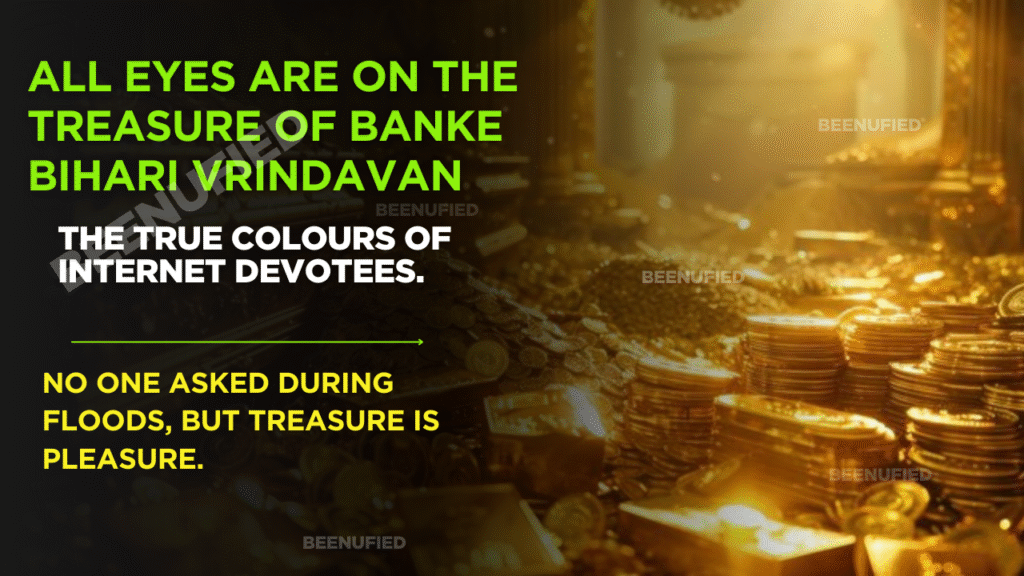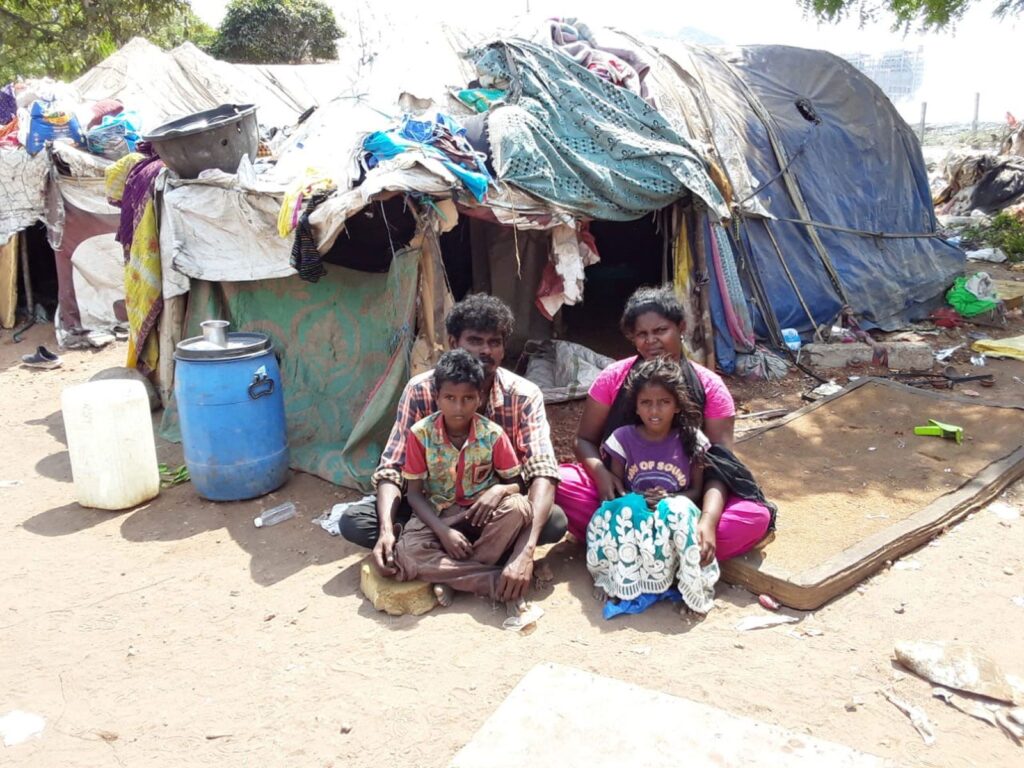
Have you ever heard about the priceless treasure of the Banke Bihari Temple in Vrindavan? It is said that a secret passage lies beneath the throne of Thakur Banke Bihari Ji, leading to this hidden wealth. But the big question is: Who does this treasure actually belong to? Certainly not to the priests of Banke Bihari personally, as many rumors claim. Yet, the discussion around this has captured attention across the country.
The manifestation of Banke Bihari Ji dates back to when saint Swami Haridas Ji, through his devotion, revealed the deity banke Bihari to the world. After his departure, the service of Thakur Ji continued according to the Haridasi tradition and the rituals established by him. Some argue that Banke Bihari does not belong to anyone in particular, but rather to everyone. That is true in a spiritual sense—but the specific Vigraha (idol) is personal to the lineage of those who serve him, just as the Laddu Gopal in your home belongs to your family and is inherited by your successors.
At the same time, it is undeniable that the temple receives immense offerings every year—enough to manage the shrine efficiently without charging devotees for VIP tickets. Ironically, many who protest against VIP tickets are the same people who benefit from them. It is not known that priests force anyone into VIP darshan, yet controversy persists.
Government Intervention in the Temple Treasury
The government now seeks both the construction of a Banke Bihari Corridor and greater control over the temple’s treasury. It is true that the offerings have not always been used effectively. Stampedes, loss of lives, anxiety among devotees, mismanagement of darshan, mistreatment of pilgrims, and even open loot have been reported. Clearly, immediate action was required.
No matter how personal the deity may be, there is still a responsibility towards society and devotees—especially when such enormous donations are involved. Even major businesses are legally bound to contribute under CSR.
On ordinary days, the Banke Bihari temple sees an average of 50,000 visitors, around 1,00,000 on weekends, and up to 5,00,000 during festivals. With such overwhelming crowds and such high donations, mismanagement becomes inexcusable. Government intervention was inevitable—and perhaps necessary.
But the new trust structure has raised concerns. The government will appoint 11 nominated and 7 ex officio trustees, including:
- 3 representatives from the Vaishnav tradition,
- 3 saints or leaders from other Sanatan Dharma traditions,
- 3 other Sanatan representatives, and
- 2 Sevayat Goswamis.
Critics argue that mixing other traditions into the Haridasi system dilutes its essence. Only the Goswami lineage of Banke Bihari knows the exact timings of rituals—when offerings should be made, when the deity rests, when Aarti is performed, and which festivals are to be observed. Outsiders, especially those who come only for tourism, reels, or material wishes, may never grasp the depth of these practices.
Can Every Place Become Another Ayodhya?
There is a misconception that Vrindavan should be developed like Ayodhya. But not every sacred site requires the same model. One Ram Mandir is enough for India. Ayodhya had been destroyed by foreign invaders; its heritage erased, its very name changed. Ram Lalla remained in a tent until his new idol was consecrated.
Vrindavan is different. The deities here manifested themselves through saints, Gopis, and Sakhis. The beauty of Braj lies in its antiquity, heritage, and devotional traditions—not in concrete structures.
One Goswami from the Radha Vallabh Temple once said, “Build a corridor if you must—but not with concrete. Let it be made of vines and trees. Restore Braj’s original form.” Indeed, what Vrindavan needs is management and crowd control—not concrete jungles.
Sustainable Development for Vrindavan
Proper reforms can be made without destroying Braj’s essence:
- Use illegally occupied land for expansion.
- Conduct risk assessments for crowd management.
- Employ trained staff and create physical barriers.
- Separate entry and exit points.
- Introduce token-based entry systems.
- Install 24/7 monitoring for crowd flow.
- Keep emergency teams ready.
- Provide resting areas for devotees.
- Ensure fair relocation and compensation if homes or shops are affected.
But development must remain sustainable. Currently, Vrindavan suffers from neglected ghats, the Yamuna reduced to a polluted drain, garbage everywhere, temples near public toilets, saints living in poor conditions on the roads, and even increasing infiltration of alcohol, meat, and violence. Issues like electricity, water, education, healthcare, sanitation, and drainage remain unaddressed.
The Balance Between Faith and Commercialisation
India’s identity lies in its culture, and Braj culture is one of its brightest jewels. Not everything can or should be commercialised. A corridor may increase tourism and revenue, but at the cost of destroying Vrindavan’s spiritual identity. Unlike tourist spots, Vrindavan is a sacred place of devotion.
Therefore, the opposition is not to the corridor itself—it is to how it is being built. If concrete structures are the goal, cities already have plenty. Vrindavan does not need to be another concrete replica. With so many donations, mismanagement cannot be justified, and government oversight may be necessary. But the funds should be used to preserve culture, not dilute traditions by mixing different sects and weakening the sacred Sakhi parampara.
This is the same Sakhi tradition revealed by Shri Lalita Ji in the form of Swami Haridas, who endured persecution from heretics in public markets but never stopped chanting the name of God. Such devotion cannot be commercialised.
Tourism will flourish only when the authentic essence of Braj is preserved. Otherwise, crowds will gather only where corridors exist, not where devotion thrives.
In conclusion: Vrindavan requires management, sustainability, and preservation—not blind commercialisation. The true wealth of Banke Bihari lies not only in its hidden treasure but in its living tradition, its devotional heritage, and the faith that has kept it alive for centuries.
READ MORE:– Ramayan – Myth or Reality? : Ramayan Proof.

